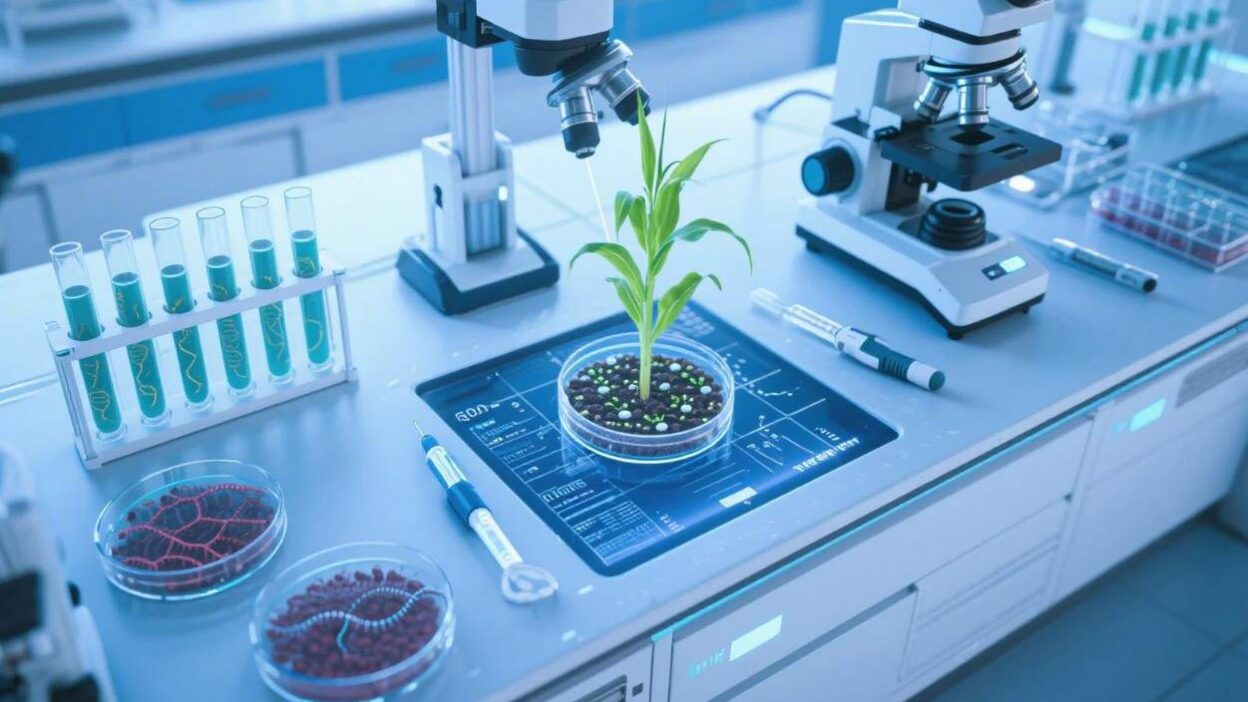Engineering a Safer Future for Food
The Growing Crisis of Food Allergies
Food allergies affect over 32 million people in the U.S. alone, with reactions ranging from mild hives to life-threatening anaphylaxis. Common allergens—peanuts, tree nuts, milk, eggs, wheat, and soy—trigger immune responses to harmless proteins, leaving sufferers navigating a minefield of dietary restrictions. Traditional solutions, such as avoidance or allergen-specific immunotherapy, are limited by cross-contamination risks, cost, and variable efficacy. Enter synthetic biology: a revolutionary field that designs and engineers biological systems to solve complex problems. By reprogramming plant genomes to eliminate or neutralize allergenic proteins, synthetic biology promises to engineer allergy-resistant crops, transforming food security and quality of life for millions. This article explores how synthetic biology is tackling this challenge, its scientific underpinnings, and the path to widespread adoption.
The Problem: Why Allergens Persist in Crops
Allergens are proteins (or glycoproteins) produced by plants that the human immune system mistakenly identifies as threats. For example:
- Peanuts: Contain Ara h 1, Ara h 2, and Ara h 3—heat-stable proteins resistant to digestion, making them potent allergens.
- Wheat: Gluten proteins (gliadins and glutenins) trigger celiac disease in genetically predisposed individuals.
- Milk: Caseins and whey proteins (e.g., α-lactalbumin) are common triggers for dairy allergies.
These proteins are deeply embedded in plant biology, serving roles in defense, growth, or storage. Eliminating them without harming crop viability has proven challenging with conventional breeding, as allergens are often linked to desirable traits (e.g., peanut oil content, wheat gluten strength). Synthetic biology, however, offers precision tools to target and modify these genes.
Synthetic Biology Tools: Reprogramming Plants to Resist Allergies
Synthetic biology leverages advanced genetic engineering, computational modeling, and synthetic DNA to redesign plant genomes. Key tools and approaches include:
1. CRISPR-Cas9: Gene Editing for Allergen Knockouts
CRISPR-Cas9, a revolutionary gene-editing tool, allows scientists to precisely delete or mutate allergen-encoding genes. For example:
- Peanut Allergens: Researchers at the University of Georgia used CRISPR to silence the Ara h 2 gene, reducing allergen levels by 90% in engineered peanuts. These modified peanuts retained nutritional quality and grew normally, showing no adverse effects.
- Wheat Gluten: Teams at the Rothamsted Research Institute are editing gluten protein genes (e.g., Gliadin genes) to reduce or eliminate immunogenic epitopes (the parts of proteins that trigger immune responses). Early trials show a 50–70% reduction in celiac-inducing proteins.
2. RNA Interference (RNAi): Silencing Allergen Production
RNAi uses small RNA molecules to block the translation of allergen genes into proteins. This approach is reversible and avoids permanent genetic changes, making it appealing for crops where gene editing is regulated strictly. For instance:
- Soybean Allergens: Soybeans contain β-conglycinin, a protein that triggers allergies in some individuals. RNAi-based soybeans have shown reduced β-conglycinin levels by 80%, with no impact on yield or seed quality.
3. Synthetic Biology Platforms: Designing Novel Proteins
Beyond editing existing genes, synthetic biology enables the creation of “designer” proteins that mimic allergens but lack immunogenic properties. For example:
- Hypoallergenic Milk: Scientists at the University of California, Davis, engineered cow milk to produce a modified β-lactoglobulin protein, which lacks the epitopes that trigger milk allergies. This protein is structurally similar to the original but does not bind to IgE antibodies.
4. Multi-Omics Integration: Predicting Allergenicity
Synthetic biology relies on omics technologies (genomics, transcriptomics, proteomics) to identify allergen genes and predict how modifications will affect crop traits. Machine learning models analyze genomic data to pinpoint critical allergen-related genes, ensuring edits do not disrupt growth, yield, or nutrition.
Case Studies: From Lab to Field
While most allergy-resistant crops are still in research phases, several projects highlight the potential of synthetic biology:
- Peanut Allergy: The “Hypoallergenic Peanut” Project: Funded by the NIH, this initiative uses CRISPR to reduce Ara h 1, Ara h 2, and Ara h 3 levels in peanuts. Early field trials in Georgia show modified peanuts grow normally, with allergen levels 80–90% lower than conventional varieties.
- Celiac Disease: Wheat with Reduced Gluten: The “Safe Wheat” project, led by the University of Helsinki, uses CRISPR to delete genes encoding α-gliadin, a major celiac trigger. Pilot crops show a 70% reduction in immunogenic gliadins, with no compromise on baking quality.
- Milk Allergy: Hypoallergenic Dairy Cows: In New Zealand, researchers are using CRISPR to edit the β-lactoglobulin gene in cows, producing milk with reduced allergenic potential. This milk is being tested in clinical trials for children with milk allergies.
Challenges and Ethical Considerations
Despite its promise, synthetic biology for allergy-resistant crops faces significant hurdles:
1. Regulatory and Safety Hurdles
- Regulatory Approval: Most countries require extensive safety testing for genetically modified (GM) crops, including allergenicity assessments. For example, the FDA mandates that modified proteins must not be “structurally similar” to known allergens, a lengthy process that delays commercialization.
- Off-Target Effects: Gene editing tools like CRISPR may accidentally modify non-target genes, potentially altering crop metabolism or introducing new allergens. Rigorous testing is needed to ensure safety.
2. Public Perception and Trust
Consumers often view GM crops with skepticism, fearing unintended health or environmental impacts. Educating the public about the precision of synthetic biology and its potential to reduce allergies is critical. For example, a 2023 survey found that 60% of U.S. consumers would try hypoallergenic peanuts if proven safe, but only 25% trusted GM technology.
3. Environmental and Ecological Risks
Allergy-resistant crops could cross-pollinate with wild relatives, potentially spreading modified genes and altering ecosystems. For instance, herbicide-resistant crops have led to superweeds; similarly, allergen-reduced crops might disrupt pollinator populations or create new invasive species.
4. Equity and Access
Ensuring allergy-resistant crops reach low-income communities is vital. High development costs (e.g., CRISPR trials, regulatory fees) could price these crops out of reach, exacerbating food insecurity. Partnerships with NGOs and governments are needed to subsidize production and distribution.
The Future: Engineering a Safer Food System
The future of synthetic biology in allergy-resistant crops hinges on innovation and collaboration:
- Advanced Editing Tools: Base editing (changing single DNA nucleotides) and prime editing (inserting/ deleting DNA sequences) will reduce off-target effects, making gene edits safer and more precise.
- Synthetic Biology 2.0: Platforms like CRISPR-Cas12 and TALENs (transcription activator-like effector nucleases) offer even greater control over gene expression, enabling targeted modifications without disrupting other traits.
- Global Collaboration: Initiatives like the Global Alliance for Genomics and Health (GA4GH) are standardizing data sharing, accelerating the development of allergen databases and predictive models.
- Policy Reform: Governments must update regulations to streamline approvals for hypoallergenic crops, balancing safety with innovation.
A World Without Food Allergies?
Synthetic biology is not just a scientific breakthrough—it is a beacon of hope for millions living with food allergies. By reprogramming plant genomes to eliminate allergens, these technologies promise to reduce suffering, lower healthcare costs, and enhance food security. While challenges like regulation and public trust persist, ongoing research and collaboration are paving the way for a future where allergy-resistant crops are as common as conventional ones.
As biologist Dr. Sarah O’Connor, a leader in plant synthetic biology, once said, “Plants are nature’s chemists. With synthetic biology, we’re teaching them to make safer, kinder molecules—one gene at a time.”
Join the conversation at AIDNESS. Should synthetic biology for allergy-resistant crops be prioritized in agricultural research? How can we balance innovation with public trust? Share your thoughts—we’re all building a safer, more inclusive food future.



